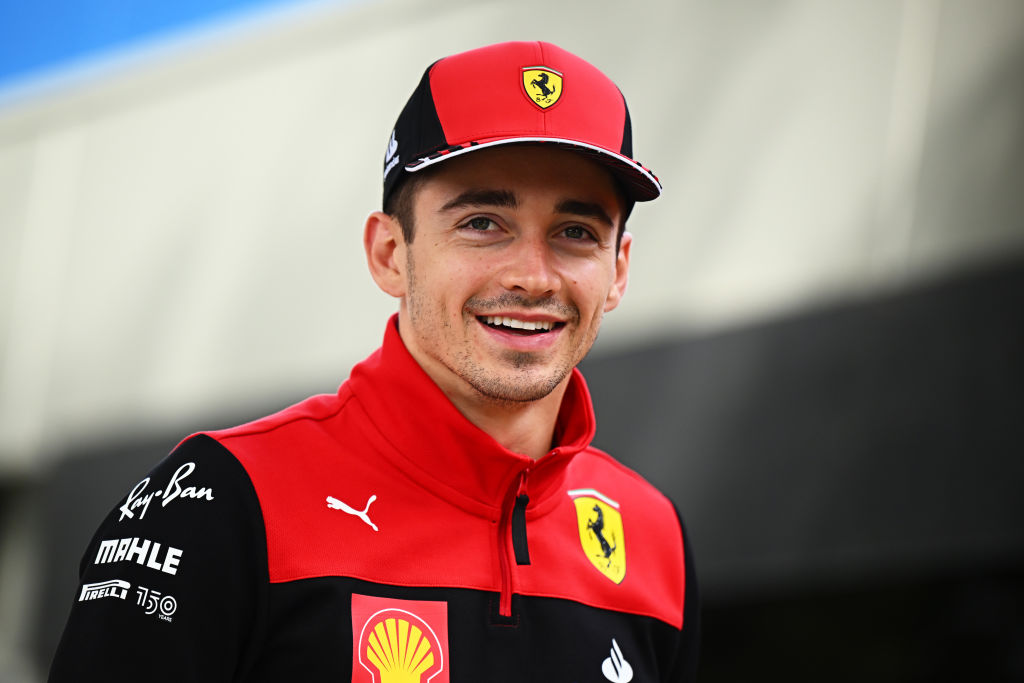Charles Leclerc: The story behind Ferrari’s Monegasque marvel

Most 24-year-olds would dream of a permanent Monaco residency, celebrity friends and a stonkingly expensive Ferrari. But for Formula 1’s latest title hopeful, Charles Leclerc, this was always seemingly his birthright.
Born and raised in the paradisal microstate on the French Riviera, Leclerc is no stranger to fast cars and professional racing. His young career has also been littered with personal tragedy, as well as run-ins with potential title rival Max Verstappen.
While the racing in this year’s opening two Grands Prix – in Bahrain and Saudi Arabia, with Australia up next this weekend – was hard and clean, Leclerc is no stranger to colliding with the Dutchman.
In their karting days the Monegasque rammed Verstappen off a track and into a deep puddle in an act of red-mist revenge for an earlier incident. They were both disqualified.
But for the English, Spanish and Italian speaking Leclerc, the conclusion of this season’s F1 campaign could mark a point of serenity and completion – rounding the circle of a young man almost destined for racing but so dogged with close loss.
The making of Leclerc
Born to Formula 3 racing driver Herve Leclerc, Charles’ grandfather owned a company manufacturing car parts – now run by his uncle and with revenues of over €1bn in 2020.
His father would never see him race at the highest level of motorsport, passing from a long illness just before Leclerc raced, and won, the Formula 2 showpiece race in Baku in 2017.
But the death of his father wasn’t Leclerc’s first tragedy in his close family. Jules Bianchi, who died following a crash with a roadside recovery vehicle at the Japanese Grand Prix in 2014, aged just 25, was his godfather.
Bianchi’s death stunned the sport at the time but became a catalyst for a flurry of safety changes – including the halo and car technology that helped save Romain Grosjean in 2020 – that have been added to the sport since. These two racing influences never saw him compete for first Sauber F1 in 2018 and then the Prancing Horse of Ferrari from 2019 onward.
Leclerc came into the big time on the back of two consecutive championships in two years, first the GP3 Series for ART Grand Prix team and then the Formula 2 title for Italian outfit Prema Racing in 2017.
Sauber were in their last season before they would rebrand as Alfa Romeo but Leclerc’s debut – as the first Monegasque driver since 1994 – was no plain sailing. Tarnished by mechanical errors and a struggling car, he managed just 13th in the championship.
Staying in F1 is difficult for various reasons – ask Nikita Mazepin, the son of a sanctioned Russian oligarch, Grosjean, without a seat following his horror fireball crash, or Robert Kubica, who was simply deemed not good enough in 2019 – but within just one season, Leclerc’s potential shone and he was offered a seat at the most prestigious team in the sport.
The Prancing Horse of Ferrari
Ferrari is the biggest brand in F1 and the size of their payouts from the governing body for being just that are testament to their impact on the motorsporting world.
In his first season in red, Leclerc achieved a career-high fourth in the drivers’ championship, outperforming team-mate and four-time world champion Sebastian Vettel by 24 points.
In 2020 he finished eighth, but out-performed Vettel – then in his last season with Ferrari – by 65 points but fell behind his current team-mate Carlos Sainz Jr – also with paternal racing pedigree – in 2021.
Ferrari were underperforming and seemingly best of the rest behind the well publicised and often sour rivalry between Red Bull and Mercedes. That’s not the case this year, however. Leclerc sits top of the driver’s championship after two races, having finished first in Bahrain and second in Saudi Arabia.
Ferrari have led more laps in the opening two races this year than they did in the last two years combined, and Marc Gene, Ferrari’s long-standing test driver, has said Leclerc is “like a 2.0 version of himself”. He’s a driver reborn this year, part of the new generation of drivers who stream live to their fans on Twitch, but still able to mix it with high society in Monaco, and chronically happy it seems. He’s difficult to dislike. He was happy with his second place in Saudi because he raced well. It comes from a love of being in the car.
Red Bull team principal Cristian Horner said of Leclerc and his champion driver Verstappen that “the racing in these first two races has been phenomenal. You can see there’s a respect between the two of them”. A swipe at seven-time world champion Lewis Hamilton? Perhaps. But it shows the seriousness with which rivals take Leclerc. He’s a world champion in waiting.
While Leclerc will be unable to break Vettel’s record for the youngest world champion, and is unlikely to topple Hamilton and Michael Schumacher’s seven titles due to the competitiveness of the racing now, he can become the first Ferrari world champion since Kimi Raikkonen and the first man to win representing Monaco.
On the face of it, Leclerc looks like he’s been following a well thought out plan to the top. But Ferrari’s prodigy has lost his big racing influences on the way and now faces the bittersweet prospect of success at the highest level without them.
For any youngster that’s tough, but in the pressure cooker of motorsport the need to succeed is amplified. Whether he wins the title this year or not, Verstappen’s rival seems a humble, witty and smart competitor. Something he was when karting against the Dutchman. Something any father and godfather would be proud of.